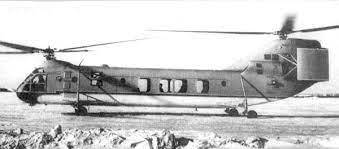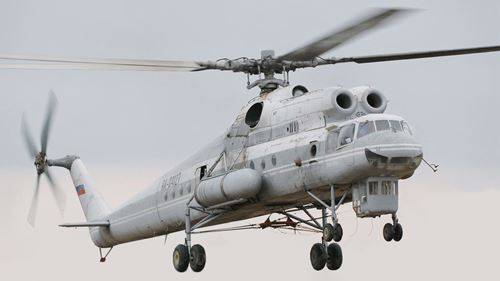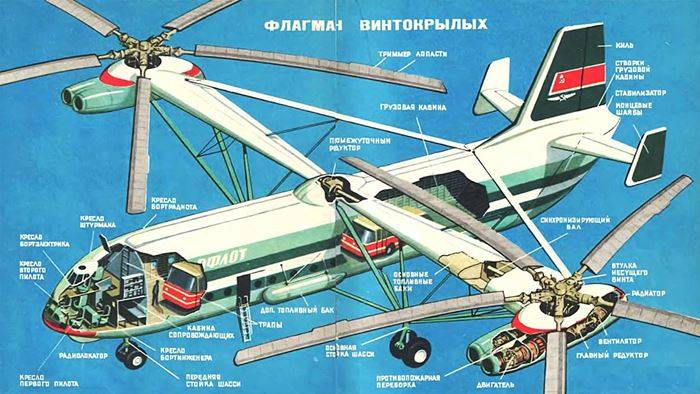Mil V-12: The Untold Story of the World’s Largest Helicopter
There have been many interesting military aircraft and helicopter designs throughout history, especially during the cold war. While most of these designs were unable to be put into mass production, they are still very impactful and potent at the time. During the cold war between the two sides, the fight wasn’t only about proxy wars or political superiority. There was also psychological warfare. The side that was able to create the deadlier weapon or manufacture the best aircraft wasn’t only superior in terms of strategy, but also gained a great advantage of morale.
In such an era, both sides didn’t only focus on functionality on their prototypes, but also on magnitude and scariness of these units to establish a psychological superiority over their opponent. This even started to be as commonly seen in the Soviet Union, which previously focused on quantity over quality due to the country’s geographic size. During these times, a very interesting idea was born, followed by a development process and manufacturing of prototypes, resulting in the biggest helicopter in history, Mil V-12 Homer (also known as Mi-12). Further in this article, we will tell the story of Mil V-12 Homer; how it was born? and why it wasn’t put into mass production?
The Idea Behind Mil V-12
In the early 50s and 60s, the Kremlin was in search of a high-capacity helicopter that was able to carry heavy ground units and high numbers of soldiers at once.The three helicopter design bureaus; Yakovlev, Mil, and Kamov, all started their own projects on this concept in the early 50s, and developed some prototypes some of which were even put into mass production, such as the Yak-24, which is considered to be the predecessor and inspiration of the legendary CH-47 Chinook.

image source: aviastar.org
In 1959 Antonov An-22 had just started to be developed, and the Kremlin decided that they wanted a helicopter version of this aircraft, with the ability of carrying 20-25 tons. The Kremlin gave the project to the Mil Design Bureau, which was also the developer of Mil Mi-6 and its successor Mi-10 at the time. The design bureau started working on the project in 1961, but it was going very slow at the beginning.

image source: wikipedia
The Development Process
Mil Design Bureau started to work on the concept in early 1961, but there were many problems with the concept. First of all, at least two separate rotors were needed to carry the Kremlin’s desired weight, and the lining of the rotors were also very important. Various line-ups were tested, including a tandem layout as in Yak-24 or CH-47 Chinook and a stacked layout as in Ka-27. But all of these designs brought along different problems. The only line-up that was theoretically able to carry such weights without many problems was a transverse layout, which basically means the usage of two rotors side by side on the two sides of the helicopter’s body, attached by extensive arms.
However, this solution also caused new problems. The additional arms added too much weight to the helicopter which made it hard for only two engines to power such a machine and carry the desired weight. Meanwhile, the Kremlin also updated their requirements, saying that the helicopter needed to carry at least 30 tons. Under the enlightenment of all these, the Mil Design Bureau came up with a new solution. Rather than using only one engine for each rotor, Mil decided to connect two engines for each rotor. Each of these engines were going to have 6500 horsepower, which means the total raw power of the helicopter was going to be 26000 horsepower. This was more than enough to carry 30 tons of carriage in a 500 km radius.
Two prototypes were made during this process, and the helicopter successfully completed its first flight in 27 June 1967. In 1969, during the late prototype development process, a total of 8 world records were broken throughout the year, three of which are still current.

Why Wasn’t Mil V-12 Put into Mass Production
Although the development process was nearly completed, the Kremlin thought that it took too long, and the development was too slow. They started to lose their interests in the project, and wanted to focus on newer projects. They didn’t cancel the project completely at first, but there were clear signs that the Kremlin wasn’t interested in the Mil V-12 anymore. Furthermore, the final form of the design turned out to be too complicated, which was against the Soviet Engineering’s approach, which suggested simple but solid designs.
With an overwhelmingly complicated design, also came very high maintenance costs. The helicopter had to stay on the ground for hours for every hour it flew, and the maintenance costs were too high for its capacity and abilities. At this point, the Soviet Union also started to consider the usage of ekranoplans, which were a lot more interesting solutions compared to the Mil V-12. For all these reasons (and possibly some political reasons), the Soviet Union decided to cancel the project, and cause another project to die away in history.
Today, the two prototypes of the helicopter are still in one piece. The first one is displayed in the Central Air Force Museum in Moscow, while the other is in Mil Moscow Helicopter Plant. While the one in the Central Air Force Museum is in good condition and still looks great, the one in Mil Moscow Helicopter Plant is nearly completely rotten, and is hardly recognizable.


